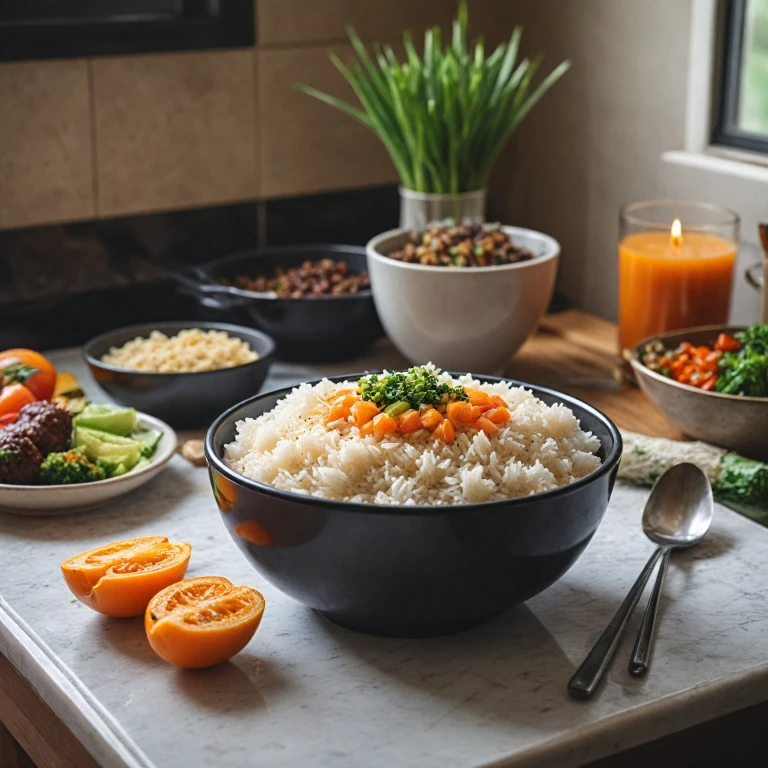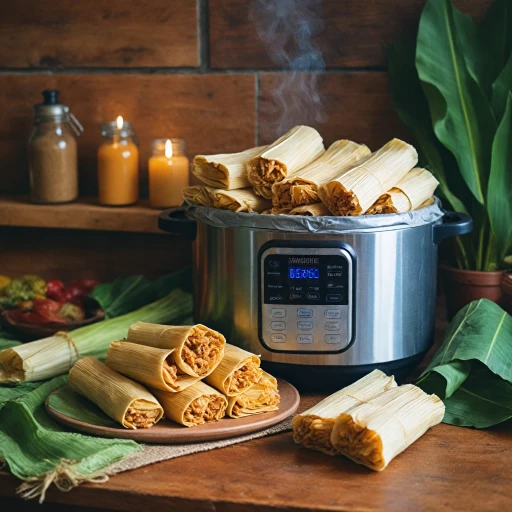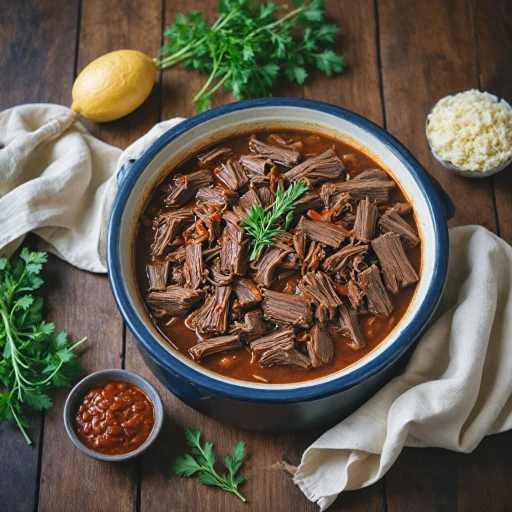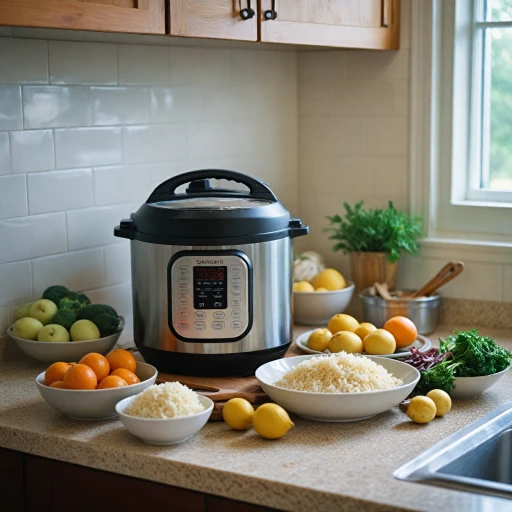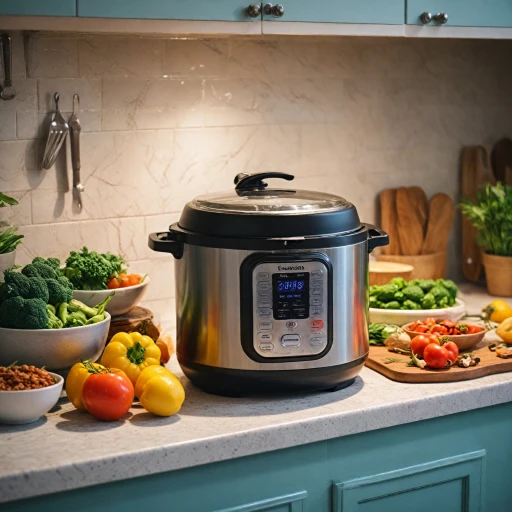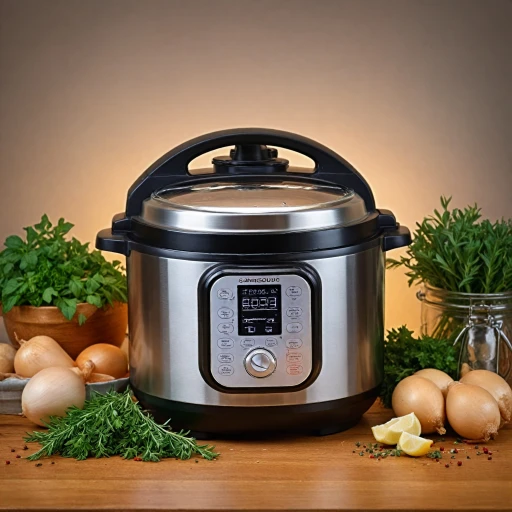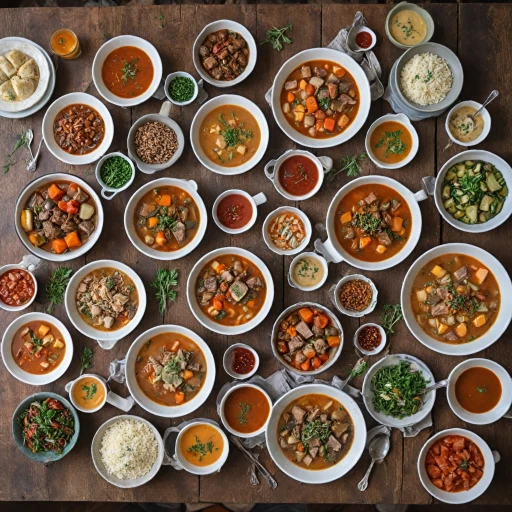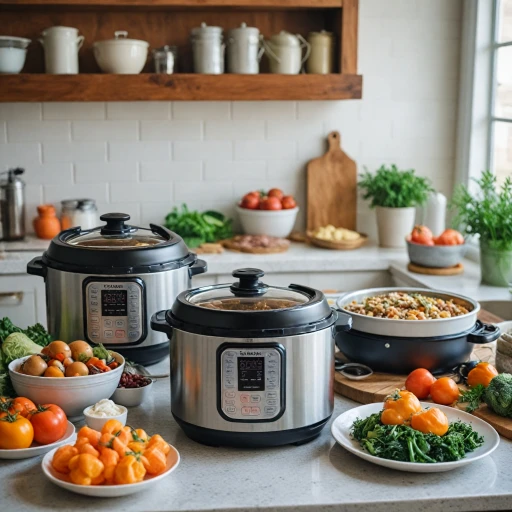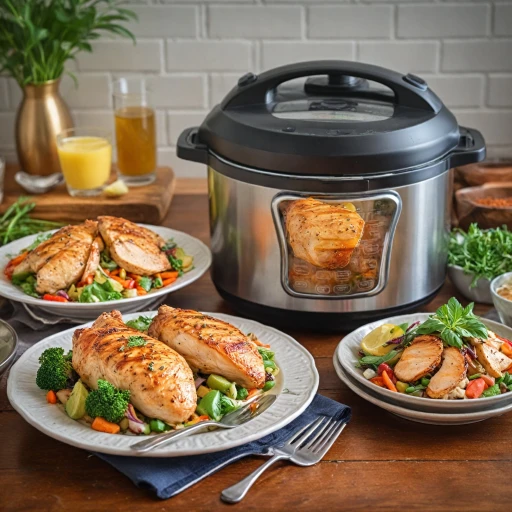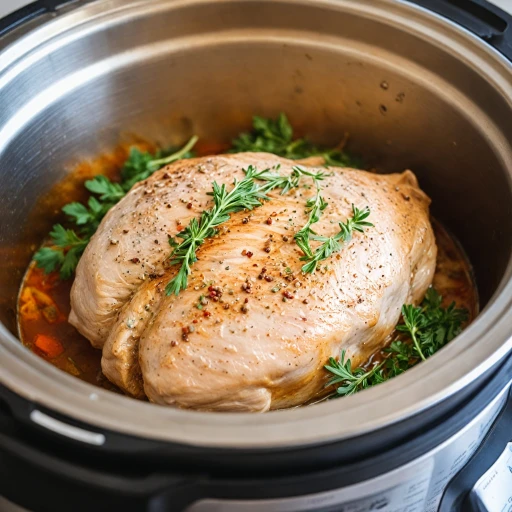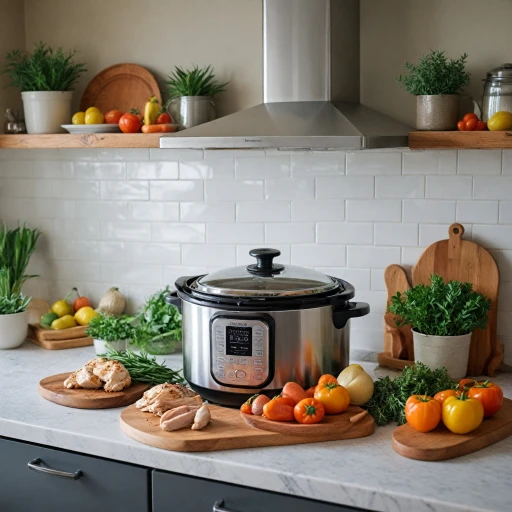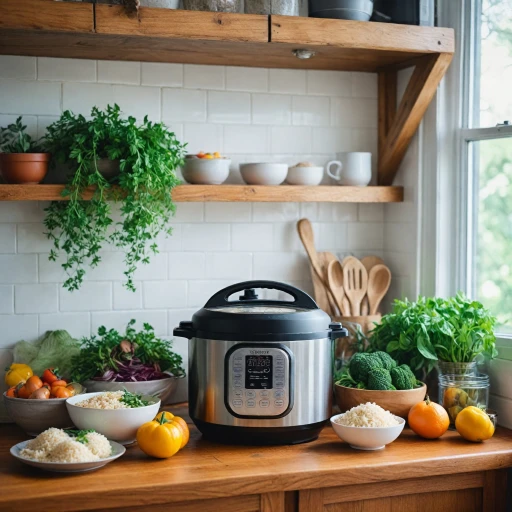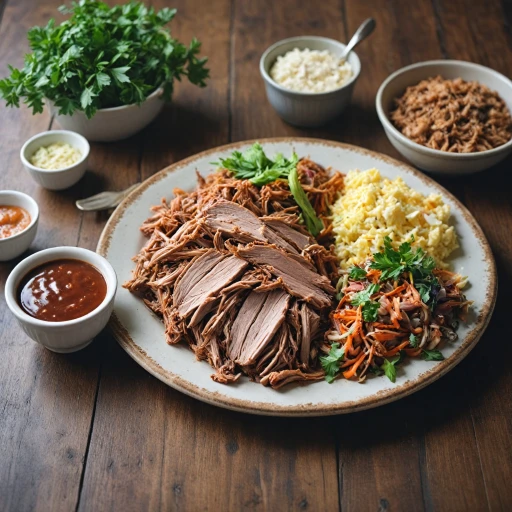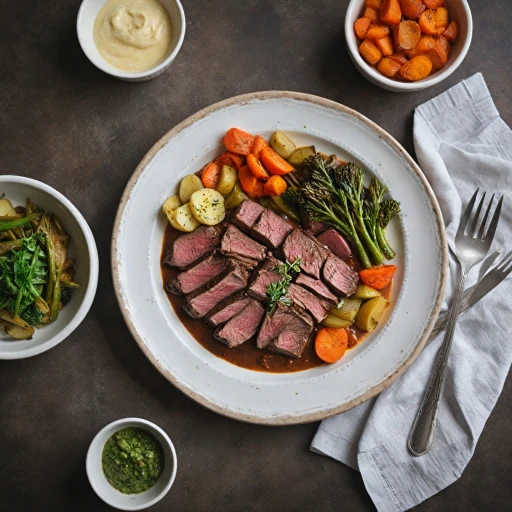
Understanding Your Instapot
The Basics of Your Instant Pot
Understanding how your instant pot functions is crucial to successfully cooking rice and other recipes. This electric pressure cooker is designed to make cooking easier and faster by utilizing high pressure steam. Before you begin, familiarize yourself with the various settings and features. Each button serves a specific purpose, allowing you to pressure cook, steam, sauté, and more. The instant pot's mechanism is simple yet efficient. It uses steam to create a high pressure environment which dramatically reduces the time it takes for food to cook. For instance, rice which usually takes 20-30 minutes on a stovetop can be effortlessly cooked in the instant pot within minutes. This transformative power makes it a go-to appliance for many home cooks.Importance of Water Ratio
One of the key steps in rice cooking is the proper measurement of ingredients. The ratio of water to rice is crucial as it impacts the texture and cooking time. Typically for white rice, a 1:1 water to rice ratio works best, while brown rice often requires more water due to its harder exterior. Regardless of the type, always begin by rinsing the rice under cold water until the water runs clear to remove excess starch. Once rinsed, combine the rice and water in the instant pot. From there, the cooker will take over, as long as the correct settings are employed.Getting the Timing Right
Timing is another critical component. The instant pot makes it easy to time your recipes with precision. For white rice, setting the pot to high pressure for about 4-6 minutes followed by a natural pressure release for 10 minutes often yields the best results. Keep in mind that these times can be adjusted depending on personal preference and the specific type of rice you use. For those venturing beyond traditional white rice, exploring the wild rice cooking guide could provide a wealth of tips and techniques, allowing you to fully master rice cooking in your instant pot.Choosing the Right Rice
Picking the Perfect Rice for Your Dish
Choosing the right type of rice is crucial when using your instant pot to achieve the perfect texture and flavor. Different varieties of rice require different cooking times and water ratios, so understanding these differences is key to mastering your rice cooking skills.
White Rice vs. Brown Rice
White rice is a popular choice due to its quick cooking time and fluffy texture. It typically requires a 1:1 ratio of rice to water and cooks in about 4-8 minutes under high pressure. Brown rice, on the other hand, is more nutritious but takes longer to cook, usually around 20-25 minutes, and needs a bit more water, about 1.25 cups of water per cup of rice.
Specialty Rice Varieties
If you're feeling adventurous, consider trying specialty rice varieties like jasmine, basmati, or wild rice. Each has its own unique flavor profile and cooking requirements. For instance, jasmine rice is fragrant and slightly sticky, needing a similar water ratio to white rice, while wild rice, which is technically a grass, requires a longer cooking time and more water.
Rinsing Your Rice
Rinsing rice before cooking is a step often debated among cooks. However, rinsing can remove excess starch, preventing the rice from becoming too sticky. Simply rinse the rice under cold water until the water runs clear. This step is especially beneficial for white rice and basmati rice.
For more detailed guidance on selecting and preparing different types of rice, check out this comprehensive guide on mastering wild rice in an instant pot.
Step-by-Step Guide to Cooking Rice
Cooking Rice Perfectly in Your Instapot
To cook rice perfectly every time, follow these precise steps using your electric pressure cooker. Ensuring each step is meticulously followed will simplify the process and deliver consistent results.Measuring Ingredients
Start by measuring the rice and water correctly to achieve the desired texture and consistency. Most recipes recommend a ratio of one cup of rice to one and a quarter cups of water. Whether you're choosing white rice or venturing into brown rice, accurately measuring these ingredients is crucial.Preparing the Rice
Rinse rice thoroughly to remove excess starch, which can affect the fluffiness of your dish. Use cold water and rinse until the water runs clear. This step is especially important when preparing white rice.Setting Up the Instapot
Once the rice is rinsed, place it into the Instapot. Add the measured rice water. Ensure that the rice is evenly distributed at the bottom of the pot to facilitate even cooking.Adjusting the Settings
Select the 'Rice' setting or 'Manual' mode on your electric pressure cooker, which automatically adjusts the cooking time, usually ranging around 8-10 mins for white rice. For brown rice, adjust the time to about 22-25 minutes using high pressure settings.Pressure Release
After cooking, allow the Instapot to naturally release pressure for about 10 minutes before performing a quick release. This natural pressure release process ensures the rice is adequately cooked and retains moisture.Final Touches
Once the pressure is fully released, open the lid and fluff with a fork. This step is key to achieving the grand finale of tender, separated grains. For more detailed instructions and delicious recipes you can try, be sure to stick around for upcoming sections.Troubleshooting Common Issues
Handling Cooking Hiccups with Ease
When it comes to cooking rice in an electric pressure cooker, a few common issues may arise. Thankfully, with a bit of understanding and a few adjustments, you can easily troubleshoot these problems and achieve perfect rice every time.
Undercooked or Overcooked Rice
If you find that your rice is too hard or not cooked through, it might be due to insufficient cooking time or not enough liquid. Ensure you're using at least 1 cup of water per cup of rice. Also, check that the cooking time is appropriate; white rice typically requires around 3 to 4 mins on high pressure, while brown rice may need up to 22 minutes.
Conversely, if your rice is mushy, too much water could be the issue. Ensure you precisely measure your rice and water to maintain the ideal ratio. This simple step can prevent your pot of rice from becoming a sticky mess.
Pressure Release Problems
The Instant Pot's pressure release method can impact your rice’s texture. A natural pressure release allows the rice to finish cooking gently, preventing it from becoming too soft. If your rice often turns out too soggy, try a natural pressure release rather than a quick release.
Burn Notice Alert
Nobody wants to see a burn warning during rice cooking. This often happens when the ingredients stick to the bottom of the cooker due to insufficient liquid or not rinsing your rice. Always rinse rice under cold water until it runs clear to remove excess starch. Make sure to stir any grains clinging to the bottom before sealing the pot for cooking.
Rice Sticking to the Pot
Encountering rice stuck at the bottom can be frustrating. To avoid this, add a bit of oil or butter into the pot before cooking. Additionally, ensure all rice is submerged in the cooking liquid before sealing the cooker. These simple steps can keep your rice from sticking and maintain your pressure cooker's health.
Armed with these troubleshooting tips, you’re well on your way to mastering rice cooking in your electric pressure cooker. Explore, adjust, and soon you'll consistently enjoy perfectly cooked rice with your favorite recipes.
Enhancing Flavor and Texture
Enhancing the Taste and Feel of Your Rice
Getting the right flavor and texture for rice using an Instant Pot can turn a simple meal into a culinary delight. Follow these straightforward guidelines to make your pots of rice taste and feel better.
- Pre-rinse Your Rice: Before adding rice to your pressure cooker, give it a good rinse. Run cold water over your rice until the water runs clear. This simple action removes excess starch, which helps avoid overly sticky rice.
- Water-to-Rice Ratio: The key to perfect rice is the right amount of liquid. Whether you prefer white rice, brown rice, or a different variety, use approximately 1:1.25 or 1:1.5 cups of water for every cup of rice. This helps achieve a balance of moist yet separate grains.
- Natural Release for Texture: Allowing the pressure to release naturally for at least 10 mins post-cooking ensures the rice is cooked to perfection. This time helps the texture of the rice even out and prevents it from becoming mushy.
- Add Flavor with Broths: Substitute water with chicken or vegetable broth for added depth of flavor. For an aromatic flair, coconut milk can also be used for rice recipes lending a delightful aroma and taste.
- Add Seasoning and Herbs: Adding a pinch of salt or herbs like bay leaves, thyme, or basil can elevate your rice instantaneously. To kick it up a notch, try toasting the rice in the pot with some oil before adding liquid for a nutty flavor.
- Experiment with Toppings: Once cooked, finish your rice with toasted nuts, fresh herbs, or a dash of lemon zest to enhance both taste and presentation.
These techniques will surely add that missing edge to your rice cooking adventures. Remember, even small adjustments like a slight change in the water ratio or natural pressure release time can make a significant difference in your pot rice outcomes.
Creative Rice Recipes
Exploring Delicious Rice Dishes Further
For those looking to elevate their rice game beyond the basics, you can explore a wide range of exciting and creative recipes using your Instant Pot. With the knowledge gained from mastering the basics of rice cooking, you can now dive into innovative dishes that combine flavors and textures in delightful ways.- Fried Rice: Using cold cooked rice allows for the perfect texture when making fried rice. Start by cooking your rice using the pressure cooker, allow it to cool, and then stir-fry it with vegetables, sauces, and proteins of your choice for a flavorful meal.
- Risotto: While traditionally a labor-intensive dish, using an instant pot simplifies the process, allowing you to achieve the creamy taste in less time. Pair it with mushrooms or seafood for a savory delight.
- Pilaf: Elevate your rice with this aromatic approach. Sauté spices, nuts, and dried fruits in the pot before adding your rinsed rice and simultaneous water measurement for a fragrant and satisfying side or main dish.
- Brown Rice Variations: Take your healthy brown rice to another level by incorporating broth instead of water, or mix in herbs and spices pre- or post-cooking for a delightful twist.
